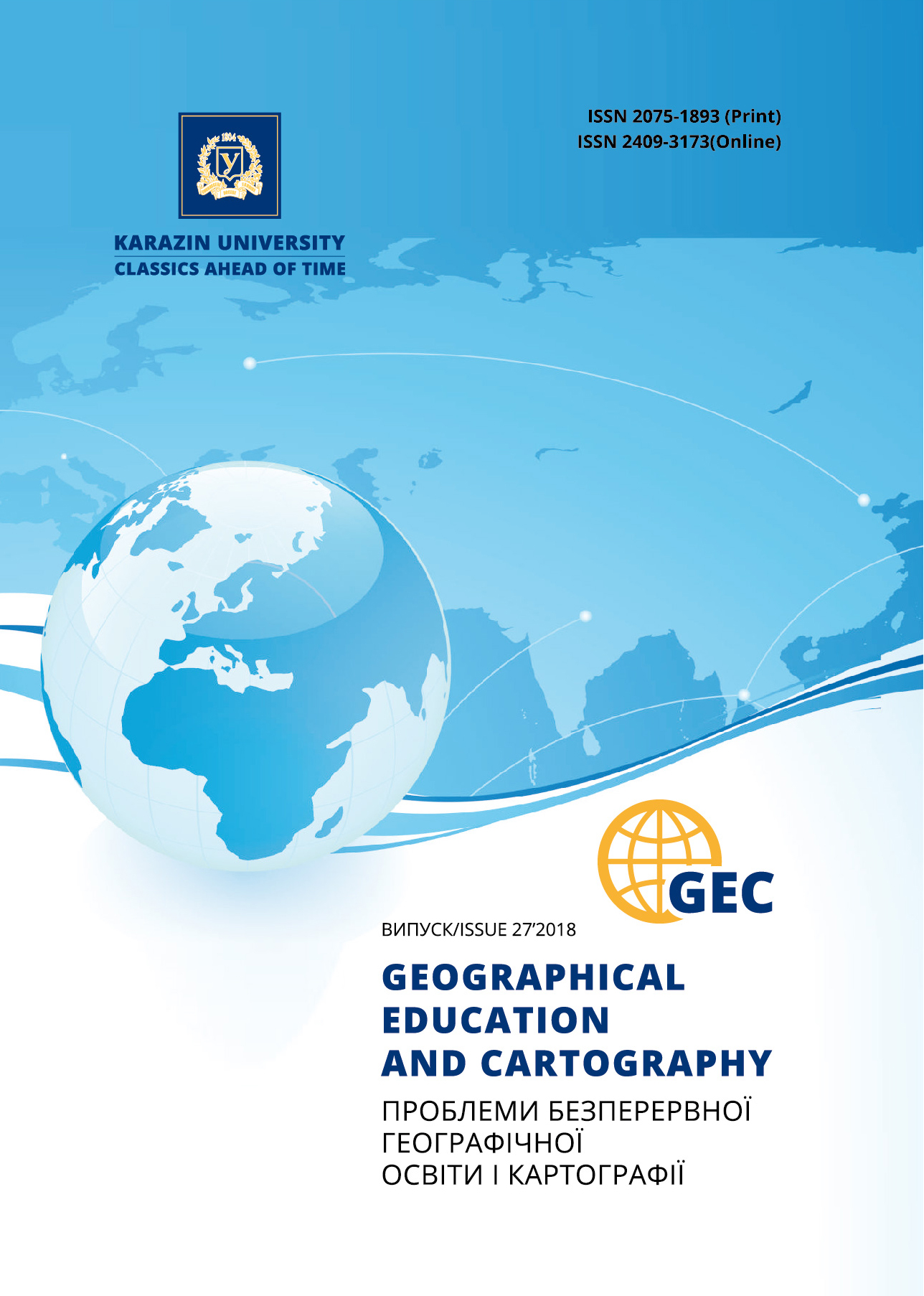Designing the historical atlas «Holocoust in Ukraine (1941-1944)»
Abstract
This article contains main information on designing the historical atlas of the Holocaust in Ukraine. The goal of creating the atlas is to demonstrate preconditions, progress and aftermath of the Holocaust in Ukraine. During the analysis of the sources of historical information about Holocaust, the authors found two atlases, which contained maps of the Holocaust in Europe: Martin Gilbert’s «The Routledge Atlas of the Holocaust» and «Historical Atlas of the Holocaust» created by the United States Holocaust Memorial Museum. Developments of the Holocaust in Ukraine are classified by location and chronology in three stages: escalation of the Holocaust in Ukraine (1941), mass extermination of Jews (1942), the final solution to the Jewish question (1943-1944). The process of the atlas design includes creating system of map’s symbols, arrangement of maps, design of different elements of cartographic images and pages of atlas. There two types of map’s symbols: general geographic and thematic. Thematic map symbols are distributed by frequency of use into commonly used and special. The creation of the map’s symbols is based on three statements: associativity, unambiguousness and equipment with explanations (optional). The designed atlas has five chapters: «Ukraine in advance of the Holocaust», «Escalation of the Holocaust in Ukraine», «Mass extermination of Jews», «The final solution to the Jewish question» and «Aftermath of the Holocaust in Ukraine». According to a dramatic conception of the atlas themes, there are used two color models: CMYK (for cartographic elements and symbols on maps) and Grayscale (design of pages and additional material). The atlas project is accompanied by a series of maps, which demonstrates semantic and design features of it.
Downloads
References
Bartrop, P., Samuel, T. (2007). Dictionary of Genocide. ABC-CLIO, 576.
Blood, P. (2006). Hitlers Bandit Hunters. The SS and the Nazi Occupation of Europe. Washington: Potomac Books, 401.
Burleigh, M., Wippermann, W. (1991). The Racial State: Germany 1933-1945. New York: Cambridge University Press, 404.
Edelheit, A., Edelheit, H. (1995). History of the Holocaust: A Handbook and Dictionary. Westview Press, 424.
Gilbert, M. (1993). Atlas of the Holocaust. William Morrow & Co, 282.
Historical Atlas of the Holocaust (1995). United States Holocaust Museum: Macmillan/Simon & Schuster, 252.
Johnson, E. (1995). The Nazi Terror: Gestapo, Jews and Ordinary Germans. US: Basic Books, 664.
Atlas z istoriyi Ukrayiny`. 11 klas (1939–2005 rr.) [Atlas of the history of Ukraine. 11 form (1939–2005)]. Compilers: Isayev, D.V., Marty`nyuk, O.O., Gisem, O.V. (2006). Ky`yiv: TOV Anteks; IPT, 18.
Голокост від куль: матеріали виставки [Holocaust by bullets: the materials of exhibition]. Available at: http://www.istpravda.com.ua/themes/holocaust-history/about/
Dacenko, L.M. (2008). Navchal`ni karty` dlya shkoly`: navch. posibny`k [Training maps for school: textbook]. Ky`yiv: VGL «Obriyi», 107.
Kruglov, O.I. (2004). Xronika Golokostu v Ukrayini [A chronicle of the Holocaust in Ukraine]. Zaporizhzhya: Prem’yer, 208.
Nacional`ny`j atlas Ukrayiny` (2007) [National Atlas of Ukraine]. Gol. red. [Chef ed.] Rudenko, L.G.; golova red. kolegiyi [chairman ed. college] B.Ye., Paton. Ky`yiv: DNVP «Kartografiya», 435.
Subtelnyi, O. (2002). Istoriia Ukrainy [The history of Ukraine]. Ky`yiv: Ly`bid`, 720.
Tery`toriya teroru: materialy` roboty` memorial`nogo kompleksu [The territory of terror: the materials of memorial complex]. Available at: http://territoryterror.org.ua/





